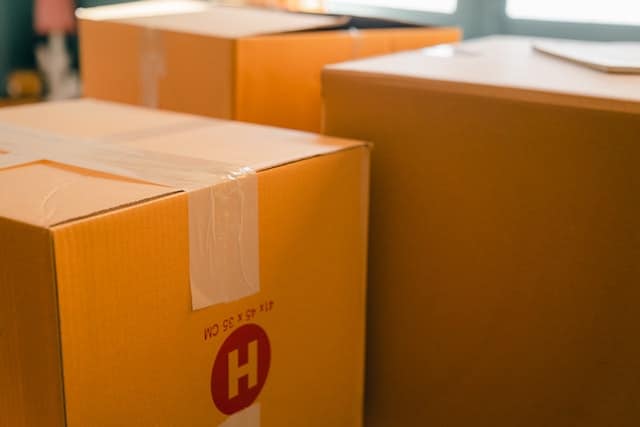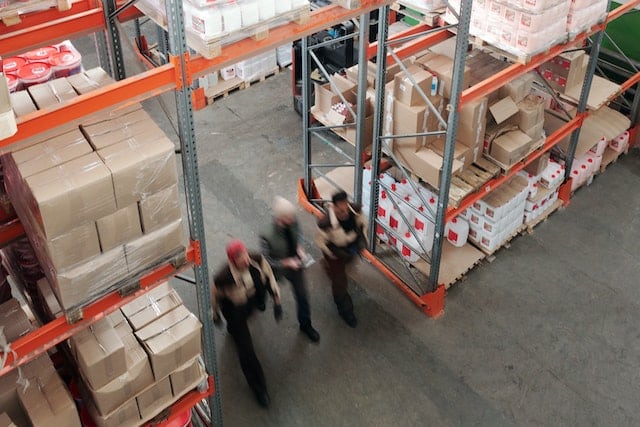Amazon spent $37.9 billion on shipping and delivery in 2019.
To put that into perspective, you could purchase any one of the top 9 most valuable sports teams. Oh jk, you could buy all of them…. Annnd have a spare billion left over to do whatever billionaires do with their extra billions.
- Dallas Cowboys – $5B
- New York Yankees – $4.6B
- Real Madrid – $4.24B
- Barcelona – $4.02B
- New York Knicks – $4B
- Manchester United – $3.81B
- New England Patriots – $3.8B
- Los Angeles Lakers – $3.7B
- Golden State Warriors $3.3B
If that seems crazy, it’s because it is. No other company in the world can (or will) invest that much money into delivering their products. So it begs the question; why?
Because they can, and they have to. Amazon built its business on convenience—and fast & free shipping is the cornerstone of that convenience. In fact, 70% of Prime members choose Amazon because of free shipping. So, for better or for worse, Amazon has no choice but to continue dumping billions into meeting their customer expectations.
How Amazon Can Offer Fast & Free Shipping
Amazon has effectively created an “on demand” mentality in ecommerce.
Consumers want their products, they want them fast, and they generally aren’t willing to pay for the extra speed (or any speed for that matter). Furthermore, 9 out of 10 consumers price check (including shipping) a product on Amazon, meaning that when your customers choose to buy with you, they are still looking to maintain that fast and free experience they are getting with Amazon.
While you can’t compete on price (nor should you), you can compete on experience. By employing the shipping & delivery strategies below, you can effectively reduce your costs, exceed customer expectations and up your post-purchase experience all without breaking your bottom line.

5 Ways to Reduce Shipping Costs and Increase Shipping Efficiency
Every time you put packages on the truck, every time that truck goes out on delivery runs, you pay money.
Whether the truck is packed to the brim with boxes, or only partially so, you still pay money. If you’re a small business with a limited shipping budget, those numbers can add up really fast. It sounds simple, but one way to cut down on shipping costs is to reduce the number of trips between your warehouse and the customer’s doorstep.
How?
1. Batch shipments
Good for: companies that can reliably send fewer but larger shipments out each day.
The classic, “kill two birds with one stone” approach to shipping.
Companies like Amazon have used this strategy for years to reduce the time, effort and overall cost associated with shipping. And while the logistics of batch shipping can be complicated, the logic is pretty straightforward: by lumping together orders going to similar destinations and sending them out in batches instead of ad hoc, you increase efficiency across multiple areas of your business, not least of which is shipping costs.
Now you may be thinking, “But if I wait before I ship, doesn’t that mean my customers wait longer, too? That’s going to ruin their experience!”
Not so fast.
Sure, waiting to hit a set threshold of orders before sending can mean that your customers experience longer wait times before receiving their products — but the news isn’t all bad! Instead, think of batch shipping as an opportunity to improve your conversion tactics. By employing the slight added pressure of a ticking clock or offering a discount to prompt customers to complete their purchase, you can motivate customers to buy.
Think about it: Amazon does this all the time. And rather than deter shoppers with long wait times, because Amazon is up front and transparent, it actually encourages customers to buy and buy quickly.
Batch shipping done right = lower shipping costs + more efficient internal processes + higher conversion rates.
Not a bad deal if you can reliably hit your target order thresholds. But if you’re sending out smaller shipments and your order volume and destinations aren’t as predictable, freight consolidation may be a better option for you.
2. Freight consolidation
Good for: companies that send out fewer products each day, but still depend on shipments arriving on time.
Among all the possible shipping scenarios you could encounter, one of the dreamier ones is sending out fully loaded trucks from your warehouse everyday.
But let’s be real, that doesn’t happen that often. And a delivery run costs the same whether you have one package in the back or a thousand. But what if you could share the space and split the cost with other small businesses who also can’t fill the space themselves? Well, you can! Through something called freight consolidation.
Freight consolidation is the “UberPool of shipping.” The companies that offer these services provide a straight-forward solution to companies struggling with shipping costs: if your shipments amount to less than a truckload (LTL), you can share the shipping costs and cargo space with other LTL shipments, while likewise reaping the benefits:
- Lower shipping costs with other vendors who need to send products to the same general destination
- Provide reliable and consistent delivery times to your customer
- Lower the risk of damage to your products by keeping them in a tightly packed container
- Lower your company’s carbon footprint by reducing unnecessary trips
3. Choose the right shipper for the job
Google “which shipping service is the best,” and you’re going to be delighted to find 2.3+ billion results that all vary drastically in opinion.
Not surprisingly, there is a lot of debate on which shipping carrier is the best, and that debate gets hotter the more you get into cost and efficiency. Each shipping carrier has different processes, different services, different guarantees, and very different strengths.
Basic strengths of the “big 4” carriers:
- USPS – cost, shipping small packages
- UPS – tracking, shipping large packages
- FedEx – fast delivery, Saturday shipments
- DHL – international shipments, fulfillment
Curious how these carriers are handling increased demand during COVID? Check out this report.
We know, that’s not nearly enough information for you to choose the right shipper for your business, but truth be told, the “best” shipper for you requires a thorough analysis of how much, how far, and how fast you want to send.
Trying to manually calculate the subtle differences in costs between carriers is an exercise in minutiae that will only create more time and headaches for you. Since we’re talking all about saving money, do yourself a favor and work with a third-party that has already negotiated lower prices and leverages technology that can serve up the best shipping options for your specific instance.
One of our favorite shipping solutions is Shippo.
4. Get smart about packaging
Another area worth exploring as you consider the price of shipping is the packaging. From the material, quantity, and price, to the design and weight, packaging can affect your shipping costs in a number of ways.
The good news is that means you have multiple options to choose from as you attempt to reduce shipping costs through smarter packaging:
- Bulk orders: when it comes to cutting costs, bulk purchases will always win out over one-offs. But make sure you have an accurate idea of your packaging demands; you don’t want to buy ten thousand boxes a month if one thousand will do.
- Cost-effective alternatives: not all packing materials are created equal. Do you need to wrap your products in bubble wrap when blank newspaper would do? Does every product warrant a cardboard box, or could you bag a few?
- Custom-sized packaging: did you know you’re paying for the space your products don’t occupy in their boxes? Who wants to pay for air? If your products don’t fit snugly in a traditional box, you might opt for a custom route.
- Trim the fat: heavier packages cost more to ship than lighter ones. In addition to package volume, it’s critically important to reduce package weight, which may involve using some lightweight alternatives.
- Free packaging: Did you know shipping services like FedEx, UPS, DHL, and even the U.S. Postal Service all offer free shipping mailers? What’s better than free?
5. Reduce customer returns
You hate to see it.
A customer makes a successful purchase on your site, takes one look at their order, and decides to send it back. If you offer free returns and exchanges, you understand all too well that what’s free to your customer, definitely isn’t free to you. Even if your customer just wants to exchange the product, you will still need to swallow the associated shipping costs.
- Initial shipping to customer 💰
- Return/ exchange shipping 💰
- Shipping back to customer 💰
Ecommerce returns will cost retailers $550 billion in 2020, not including restocking costs and loss of inventory. Customers can return their purchases for a number of reasons, some—but not all—being beyond your control. To reduce returns (and therefore your shipping costs), you might try the following:
- Set clear expectations upfront: in most cases, you can decrease your returns by accurately portraying your products in your online store. Elements like size, scale, and material all need to be obvious from the photos, videos, and other digital content on your site. That goes for shipping and handling fees as well!
- Adopt a liberal returns policy: most online retailers only allow their customers 14-30 days to return products. This creates a sense of stress and urgency that can inadvertently push customers to return quicker. Instead, opt for a 45-90 day return period. This will allow your customers to spend more time with a product and decrease the chances they will return it.
- Provide responsive communication: on a similar note, responsive customer service, or live messaging, can greatly reduce customer anxiety throughout the purchase process. You can answer customer questions prior to purchase, lead them through the purchase path, and provide custom assurance about the location and condition of their order after the purchase is made.

How You Can Afford Free Shipping
Finally, the culmination of everything we’ve been talking about: How to offer free shipping.
Once you’ve done the leg work to tighten shipping & delivery costs by employing one (or all) of the strategies above, you’ll be in a good place to give your customers what they really want.
As we covered in the beginning, unless you’re Amazon, Bill Gates or some heir to an oil empire, you probably don’t have too many spare billions to spend on shipping costs. With no billions, and the same customer expectations, you still need to find ways to provide free shipping.
How do you do it? Here are some options:
- Bake shipping into the total product cost: this takes some planning on your end, but it can effectively shift the cost of shipping over to the customer, and allow you to offer faster (and free) shipping options.
- Apply restrictions on shipping: you don’t have to offer free shipping to everyone. You can pick and choose based on your individual circumstances. Offer free shipping to first-time buyers to increase conversion. Save free shipping for holiday sales or serve up shipping bargains for subscribers.
- Bundle it up: take a look at your product catalog and see where you can bundle individual products together. Instead of selling three separate $10 products, group them together, price the bundle at $25 and voila! Shipping costs covered.
Dig into other free shipping techniques.
So whether it’s moving to more efficient shipping, trimming the fat on your packaging, or reducing the number of returns, there are loads of creative ways for you to save money on your delivery costs and even improve your post-purchase experience in the process.